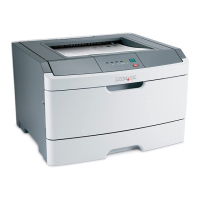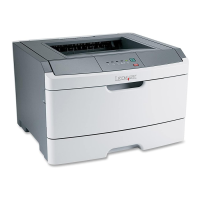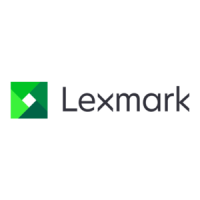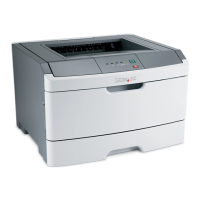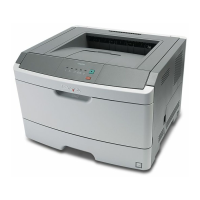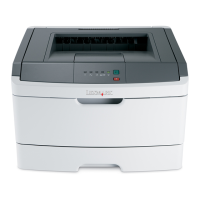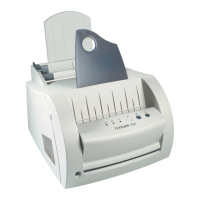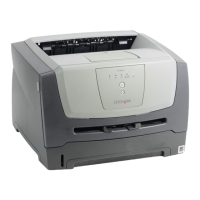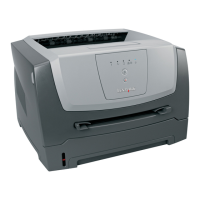Diagnostic aids 3-9
4513-220, -230
Adjustment procedures
Printhead assembly mechanical adjustment
Note: The printhead must be aligned electronically. To align the printhead electronically, call the next level of
support.
A printhead needs to be correctly positioned after it has been removed. Use a pencil to mark the screw locations
of the old printhead on the metal frame. Align the new printhead relative to the location of the old printhead.
Skew is caused by a sheet being fed through the printer while misaligned. The entire image is rotated relative to
the sheet edges. However, a mechanically misaligned printhead causes the horizontal lines to appear skewed
while the vertical lines remain parallel to the vertical edges.There are no adjustments for skew. Check the pick
roll (paper pick assembly) for wear, the paper path for obstructions, the fuser for proper setting, and the tray
paper guides for fit to the media.
To adjust the printhead:
1. Enter the Diagnostics Menu. See “Diagnostics mode selections” on page 3-8.
2. Press and release to go to Cont Prt Simplex Tray 1 ( is on).
3. Press and hold to print the first Cont Prt Simplex Tray 1 test page. Press immediately after the
paper picks to avoid printing more pages.
4. Fold the printed test page on the left side so that a few millimeters of grid lines wrap around the outside of
the fold. See photo below.
5. Fold a second vertical fold near the center so that the left side top edge aligns with the right side top edge.
Printhead
misalignment
Paper feed
skew
